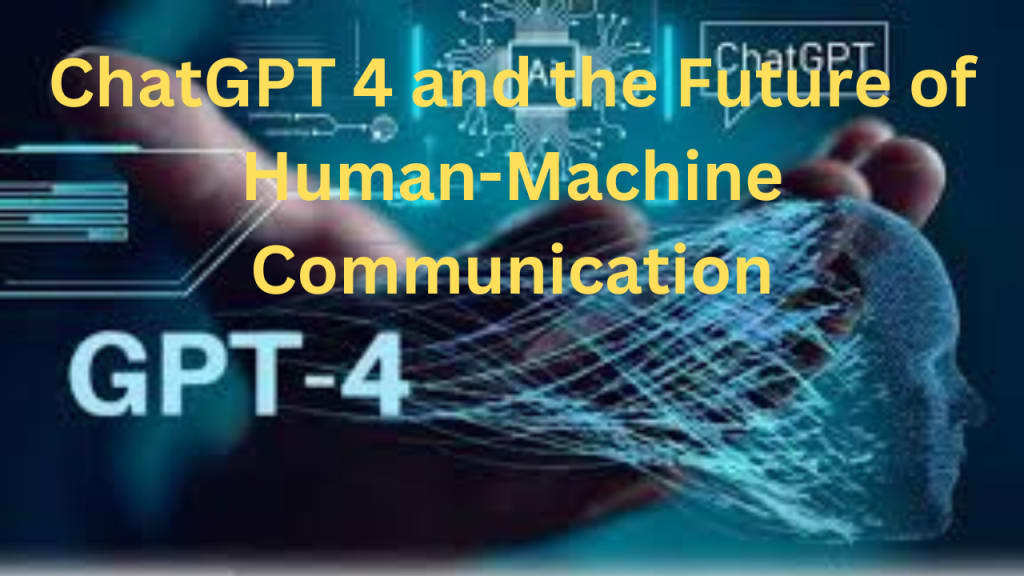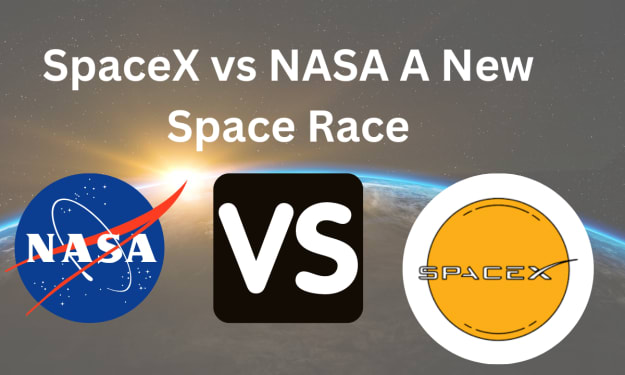ChatGPT 4 and the Future of Human-Machine Communication
ChatGPT 4

As technology continues to advance, we are seeing more and more ways in which machines are able to interact with humans. From chatbots and virtual assistants to automated customer service, the possibilities seem almost endless. And with the latest developments in natural language processing (NLP), we are seeing even greater strides being made in the area of human-machine communication.
At the forefront of this progress is ChatGPT 4, the latest iteration of the popular language model developed by OpenAI. Building on the foundations laid by its predecessors, ChatGPT 4 represents a major leap forward in the ability of machines to understand and respond to human language.
So what exactly is ChatGPT 4, and what does it mean for the future of human-machine communication? In this blog post, we will take a closer look at this exciting new technology and explore its potential implications for the way we interact with machines in the years to come.
First, let's start with a brief overview of what ChatGPT 4 actually is. At its core, ChatGPT 4 is a language model that has been trained on a massive dataset of human language. By analyzing this data and learning from it, ChatGPT 4 is able to generate natural-sounding language in response to a given prompt.
This may not sound particularly groundbreaking at first, but the key here is that ChatGPT 4 is able to generate language that is both fluent and contextually appropriate. This means that it can understand the nuances of human language and respond in a way that feels natural and intuitive to the person on the other end of the conversation.
But what does this actually look like in practice? To get a better sense of how ChatGPT 4 is being used and its potential applications, let's take a look at a few different examples.
One area where ChatGPT 4 is already being used is in the development of chatbots and virtual assistants. By integrating ChatGPT 4 into these systems, developers are able to create bots that are much more responsive and intuitive than their predecessors.
For example, imagine that you are using a chatbot to book a flight. With earlier chatbots, you might have had to input your information in a series of text fields, with the bot responding with a series of pre-written prompts. With ChatGPT 4, however, the bot is able to understand and respond to more complex requests, such as "I want to book a flight from New York to London next Friday."
This level of responsiveness is a major step forward in the development of chatbots and virtual assistants, as it makes the experience much more user-friendly and intuitive. And as more and more businesses and organizations begin to adopt these technologies, we can expect to see even more impressive applications of ChatGPT 4 in the years to come.
Another area where ChatGPT 4 is likely to have a major impact is in the field of customer service. With many companies now relying on chatbots and other automated systems to handle customer inquiries, the ability of these systems to understand and respond to human language is becoming increasingly important.
With ChatGPT 4, customer service bots will be able to handle more complex requests and provide more personalized responses. For example, a customer might ask a bot about the status of an order, and the bot could respond with a tailored response based on the customer's order history and other relevant information.
This level of personalization is likely to become increasingly important as more businesses move towards automated customer service. By using ChatGPT 4 to create bots that can understand and respond to human language in a more nuanced way, these businesses will be able to provide a better customer experience and improve overall satisfaction.
Of course, there are also potential downsides to the growing use of machines in human communication. As with any technology, there are concerns around the potential for job displacement and the impact on human social interactions. However, proponents of ChatGPT 4 argue that the benefits far outweigh the potential drawbacks.
One of the key advantages of ChatGPT 4 is its potential to help break down language barriers. By allowing people to communicate with machines in their own language, ChatGPT 4 has the potential to facilitate communication between people from different countries and cultures.
This is particularly important in an increasingly globalized world, where the ability to communicate across language barriers is becoming more important than ever. And with ChatGPT 4, we may be able to overcome some of the barriers that have traditionally hindered effective communication between people from different linguistic backgrounds.
Another potential benefit of ChatGPT 4 is its ability to help people with disabilities or other communication challenges. For example, people with hearing or speech impairments may find it easier to communicate with machines that are able to understand and respond to human language.
Similarly, people with cognitive impairments or learning disabilities may find it easier to interact with machines that are able to understand their language and respond in a way that is tailored to their specific needs. This could help to improve the quality of life for many people who have traditionally struggled to communicate effectively with others.
Of course, there are still many challenges that need to be addressed before we can fully realize the potential of ChatGPT 4 and other advanced NLP technologies. For example, there are concerns around bias and fairness in machine learning, and ensuring that these systems are able to provide accurate and reliable information to users.
There is also the question of how to ensure that these technologies are used ethically and responsibly, particularly in areas such as law enforcement or national security. As these technologies continue to evolve and become more advanced, it will be important to ensure that they are being used in a way that is aligned with our values and principles as a society.
Despite these challenges, however, there is no doubt that ChatGPT 4 represents a major step forward in the field of human-machine communication. By allowing machines to understand and respond to human language in a more nuanced way, we may be able to unlock new possibilities for collaboration, innovation, and understanding between people from different backgrounds and cultures.
As we look to the future, it will be fascinating to see how these technologies continue to evolve and how they will shape the way we interact with machines in the years to come. And with ChatGPT 4 leading the way, the possibilities seem almost endless.
About the Creator
nizam uddin
My name is Nizam Uddin and I am thrilled to be a part of Vocal.com's community of writers. As a passionate technology enthusiast, I am excited to share my insights and opinions on the latest trends and innovations in the world of tech.






Comments
There are no comments for this story
Be the first to respond and start the conversation.